With their killer instinct and feline prowess, the big-cat family represents some of the world's most impressive animals. All of them are under threat from habitat loss, poaching, and human-wildlife conflict.
Here is our expert guide to big cats, including how to identify each species and where they live in the wild.
How many species of big cats are there?
From the biggest to the smallest, there are 38 cat species found worldwide. The definition of which species are big cats varies between different organisations, with some considering just the five species in the Panthera genus to be big cats, and others including pumas (also known as mountain lions and cougars) and cheetahs.
For this guide, we have focussed on the five species in the Panthera genus: tiger, jaguar, lion, leopard, and snow leopard.
Are big cats endangered?
The five big cat species have all been assessed and categorised by the IUCN Red List. The big cat species most threatened with extinction is the tiger which is listed as Endangered.
- Tiger (P. tigris) - Endangered
- Lion (P. leo) - Vulnerable
- Jaguar (P. onca) - Near Threatened
- Leopard (P. pardus) - Vulnerable
- Snow leopard (P. uncia) - Vulnerable
Further assessment and classification work has been done on a number of subspecies and even on subpopulations. For example, of the two subspecies of lion, the Asiatic subspecies and the West Africa subpopulation of the African subspecies are listed as Endangered and Critically Endangered respectively. Some subspecies are already extinct, such as the Javan and Caspian tigers.
Why do big cats usually stalk and pounce?
Hunting consumes a huge amount of energy, and it is much more calorie-efficient for cats to sit, wait, stalk and pounce rather than travel long distances over difficult terrain, says BBC Wildlife contributor Karen Emslie.
Feline energy expenditure has been the subject of research by scientists from the University of California, who developed a high-tech collar equipped with GPS and accelerometers to track and monitor wild mountain lions.
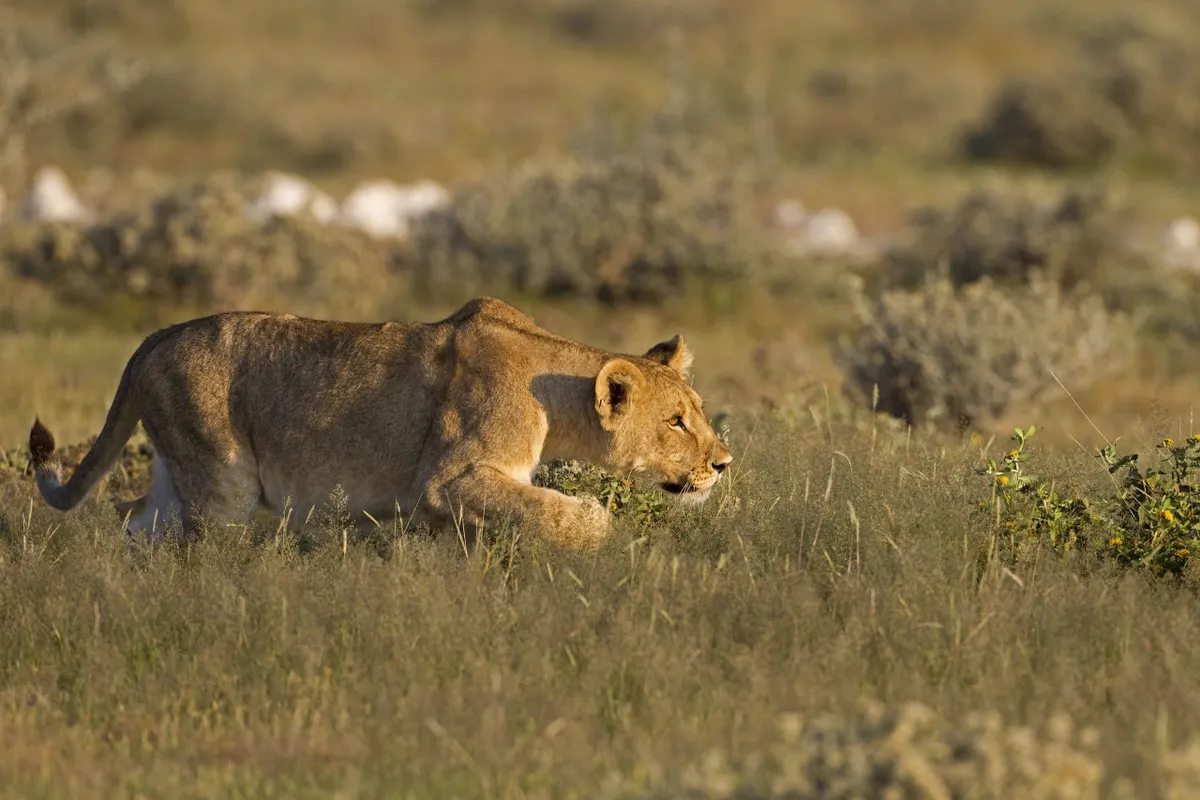
They found that not only do the cats use the most energy-efficient form of hunting and stalking, but they also adjust the power of their pounce depending on the size of their prey.
The team also studied captive mountain lions and discovered that, despite their strength, they lack a high aerobic capacity, and therefore have a slow walking pace. This enables them to conserve energy for killer bursts of speed and power pounces.
Apex predators in the wild: which mammals are the most dangerous?
Predators need to kill and eat other animals to survive. Common predators include, wolves, lions, cheetahs, and other big cats. However the success rate of each species can vary with pack animals more likely to successfully kill their prey.
Our apex predator guide looks at animals that hunt in the wild, comparing common prey and the hunting success rates of each species.
Why can only big cats roar?
There are four big cats that can roar: lion, tiger, leopard and jaguar - all of which belong to the genus Panthera, says Stephen Mills.
In these species, the epihyal bone, part of the voice box, is replaced by a ligament. This can be stretched, creating a larger sound-producing passage and thus a wider range of pitch. The more the ligament extends, the lower the sound generated when air passes across the vocal cords. In addition, the cords are large, unbroken and fleshy, which produces deeper sounds.
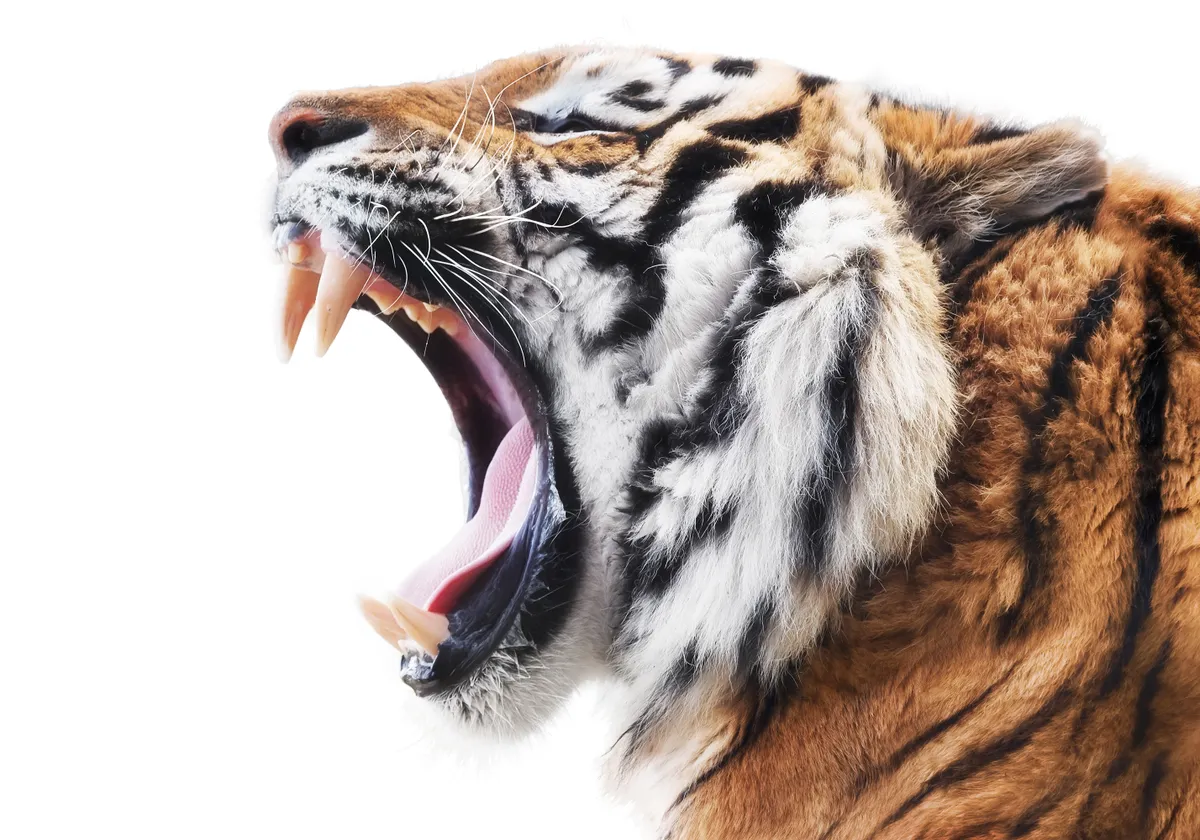
Why can't cheetahs roar?
The bones of the cheetah's voice box form a fixed structure, with divided vocal cords that vibrate with both in and out breaths. This structure is the same for all the 'small' cats. While this design enables these cats to purr continuously, it limits the range of other sounds and prevents them from being able to roar.
Just because cheetahs are relatively large, that doesn't mean they can roar - they still have small-cat anatomy despite their size, and it's exactly the same for pumas/mountain lions.
Do big cats purr?
Big cats don't purr. Purring and roaring are mutually exclusive, so lions, tigers, leopards and jaguars are all incapable of purring, while every other cat can purr but not roar.
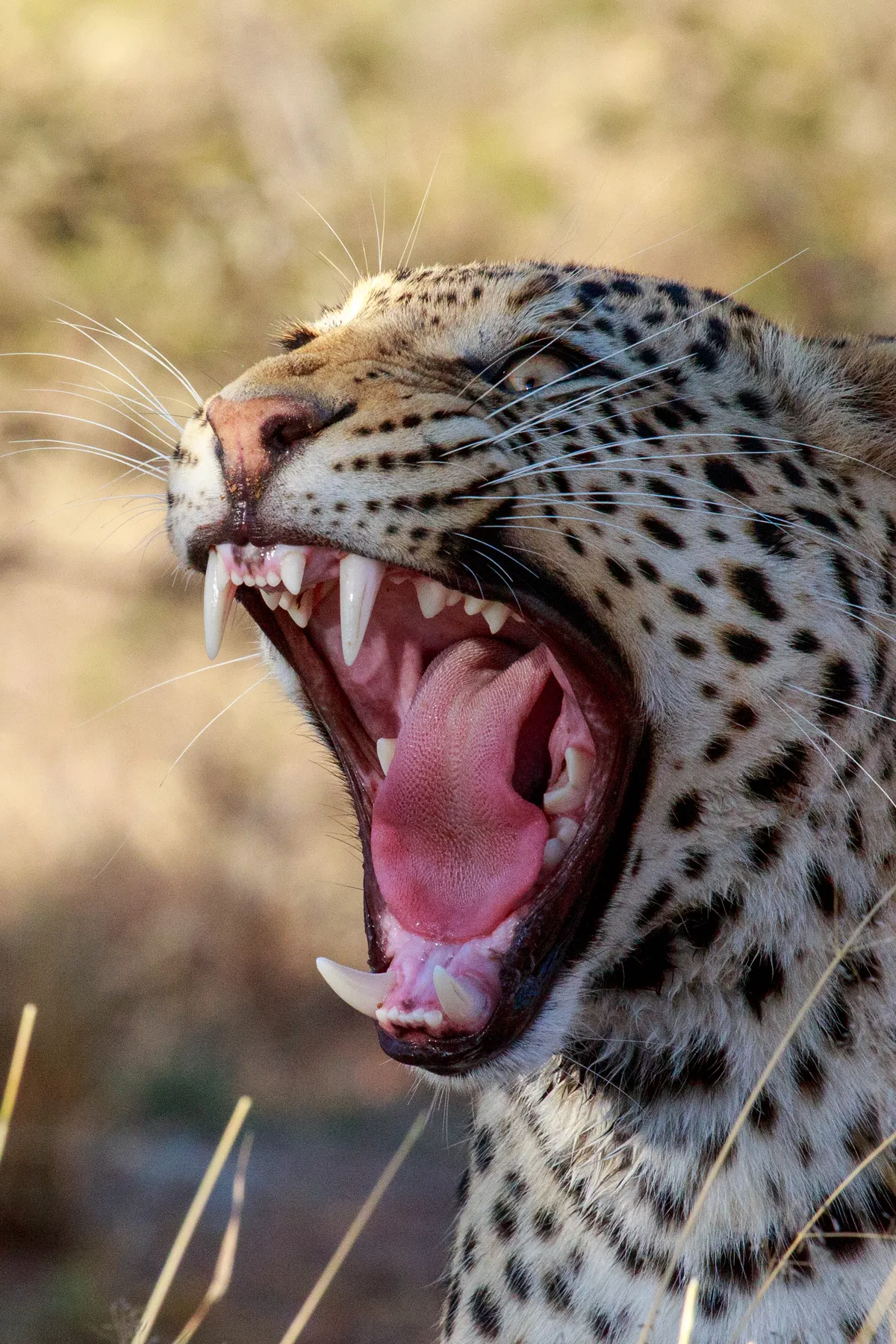
Are there any exceptions?
Interestingly, the snow leopard - also a member of Panthera along with lions etc - cannot roar. Its vocal cords lack an all-important layer of fatty, elasticated tissue, which, in other big cats, gives the vocalisations an uneven rumble that emerges as a roar.
Some scientists therefore argue that the snow leopard deserves its own genus: Uncia.
Which big cat has the strongest bite?
The jaguar has the strongest bite of any big cat relative to its size. Research by Adam Hartstone-Rose and colleagues at the University of South Carolina, who compared the bite forces of nine different cat species, reveals that a jaguar's bite force is only three-quarters as strong as a tiger's bite force.
However, given that jaguars are considerably smaller (the body mass of the individual in the study was only half that of the tiger), relatively speaking their bite is stronger.
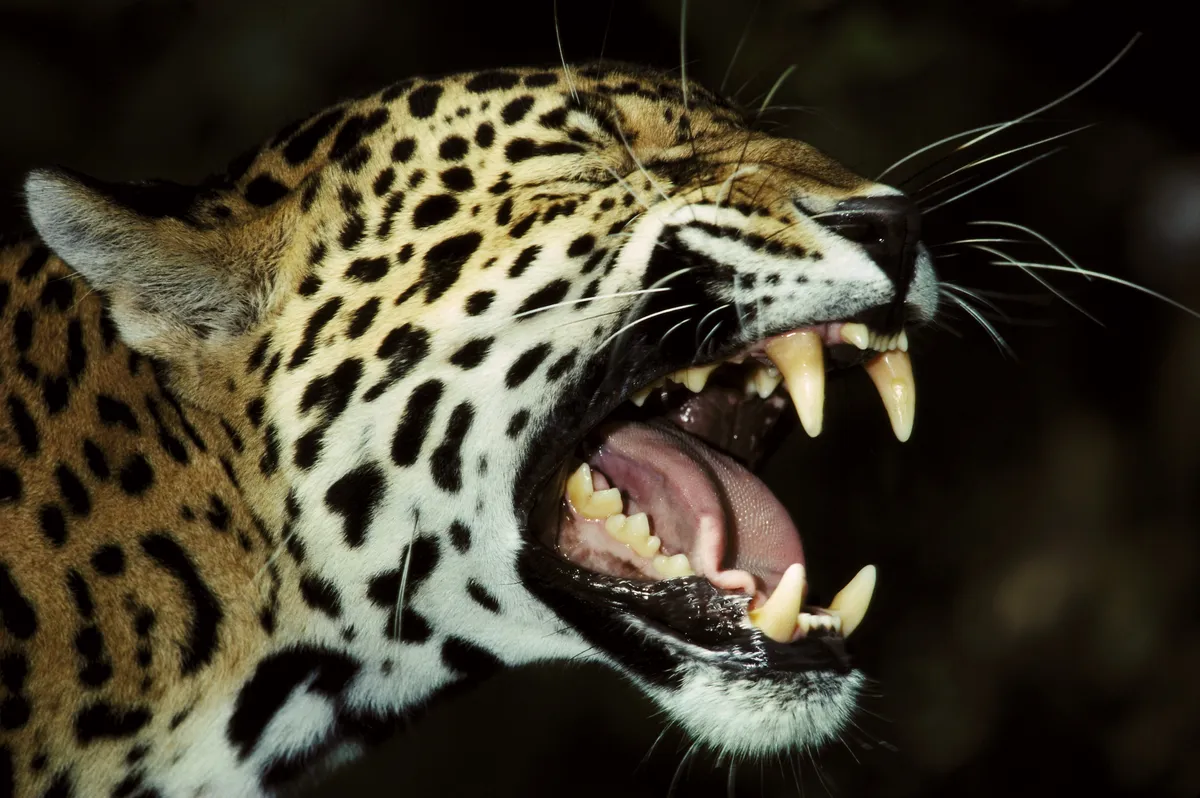
“If you had to choose, you’d want to be bitten by a jaguar, not a lion or a tiger. But pound for pound, jaguars pack a stronger punch,” says Adam.
“The strength of the jaguar’s bite is due to the arrangement of its jaw muscles, which, relative to weight, are slightly stronger than those of other cats. In addition – also relative to weight – its jaws are slightly shorter, which increases the leverage for biting.”
These two modifications, though minor, combine to give the jaguar the strongest relative bite force. Indeed, a jaguar can bite straight through the skull of its prey, and pierce the thick skin of a caiman with ease.
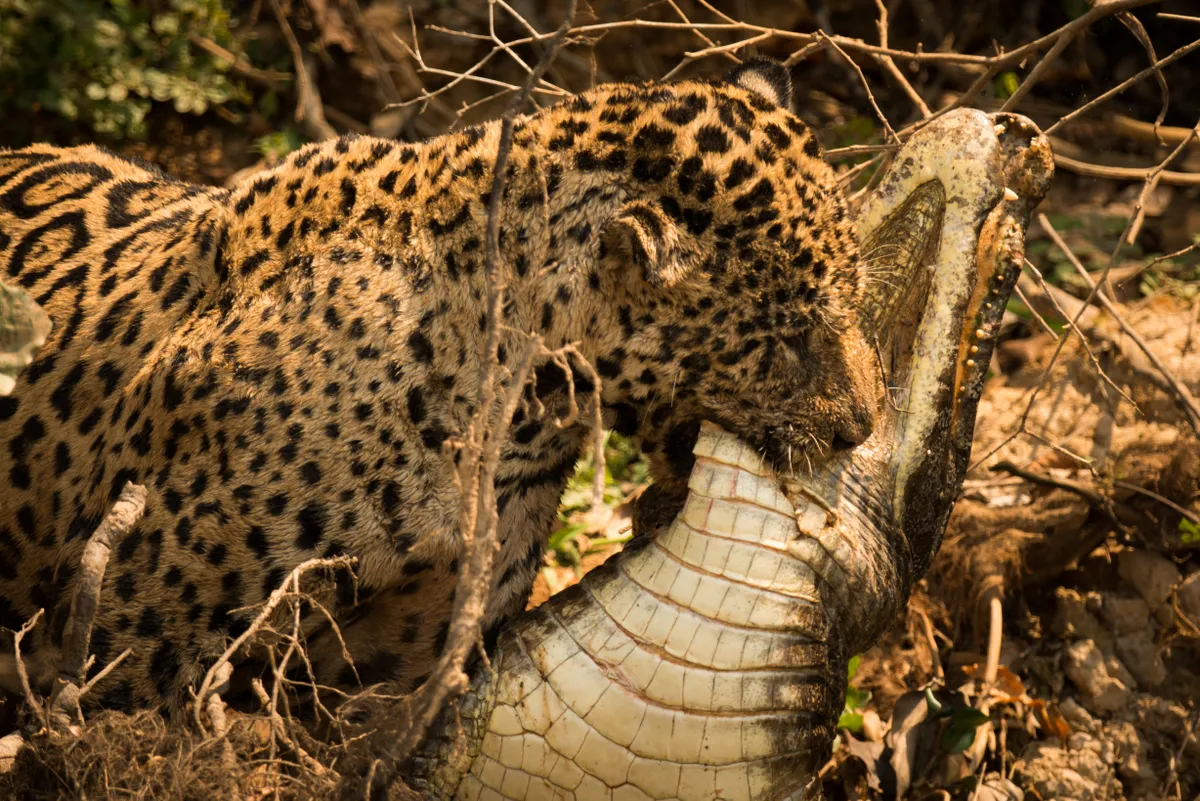
Can lions and tigers co-exist?
India is the only country in the world that is currently home to both of these charismatic big cats, and history and biology say they can indeed co-exist. The felines’ ranges overlapped for millennia across much of western Asia – in India, this was the case into the early 19th century.
Much as predators co-exist in Africa, tigers and lions can live together within carefully drawn boundaries. For example, they may use adjoining habitats, or the same habitats at different times. Behavioural adaptation is another strategy, particularly when it comes to hunting: tigers are largely
killing prey by ambush, while lions are social felids, hunting co-operatively with their prides.
The question of lions and tigers as neighbours is gaining importance in India. The Kuno Palpur Sanctuary in Madhya Pradesh has been ‘prepared’ and is awaiting translocation of a number of Asiatic lions, which survive only in the greater Gir landscape in Gujarat, western India. In the meantime, tigers are moving into Kuno from the famous Ranthambhore Reserve, crossing rivers and ravines along the way.
This Q&A originally appeared in BBC Wildlife Magazine, and was answered by Prenrna Bindra.
Lion (Panthera leo)
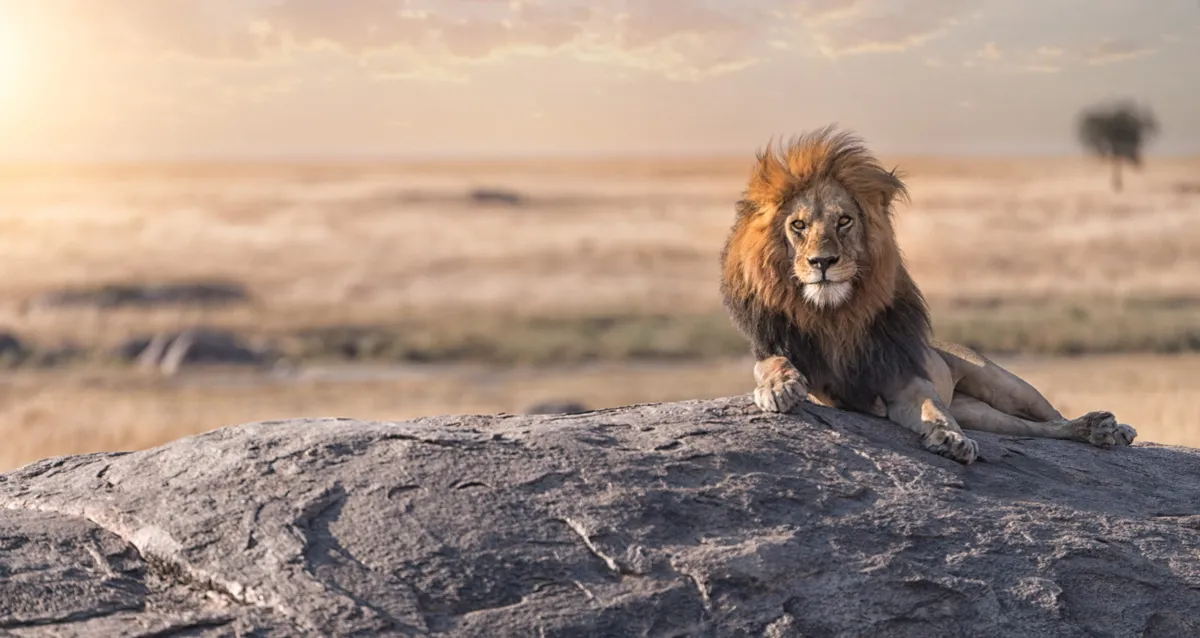
How many subspecies of lion are there?
There is only one species of lion, which is known scientifically as Panthera leo. There are two recognised subspecies, the African lion (P. l. leo) and the Asiatic lion (P. l. persica).
Some taxonomists have proposed a different split of the subspecies – with P. l. leo covering lions in Asian and west, central and north Africa, and P. l. melanochaita for lions in south and east Africa.
Why do lions have manes?
Male lions boast impressive manes, conveying a range of information about their owners status among the pack. Long dark manes indicate that the lion is in peak condition.
The darker the mane, the more attractive to females. However, long dark manes can also lead to lower sperm counts in males when temperatures rise.
Tiger (Panthera tigris)
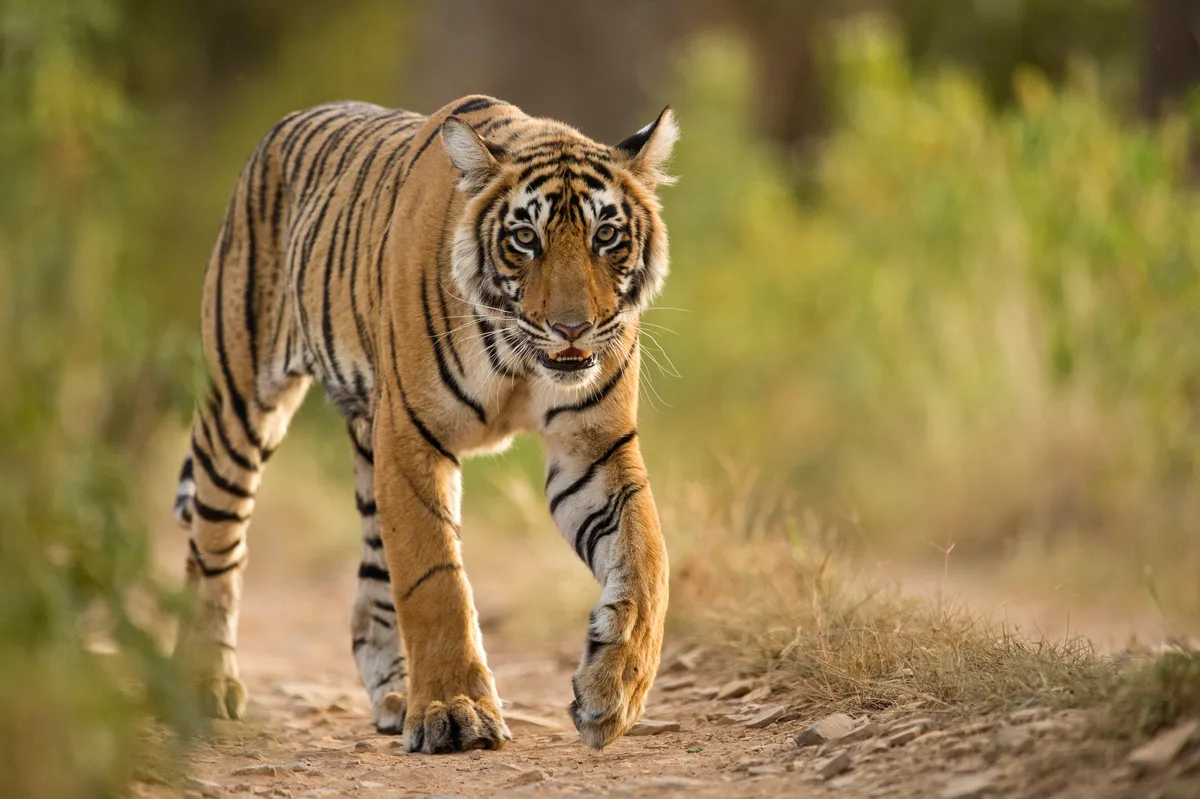
Tigers are the biggest cat in the wild. Male tigers can grow to be over 3m long and weigh up to 300kg, while female tigers tend to be a bit smaller.
How many subspecies of tiger are there?
There is only one species of tiger, but there are six extant (living) subspecies: Siberian, South China, Sumatran, Indochinese, Malayan and Bengal.
Where do tigers live?
Tigers are relatively adaptable and historically lived across huge swathes of Asia. There are now very few left in South-East Asia, but they’re doing relatively well in India, Nepal, Russia and Bhutan.
Tiger habitats vary by region, with the larger tigers of colder northern regions (like the Siberian tiger) living in the brutal taiga, while smaller tigers from warmer regions can happily live in arid forests, tropical rainforests and flooded swamplands and mangroves.
Jaguar (Panthera onca)
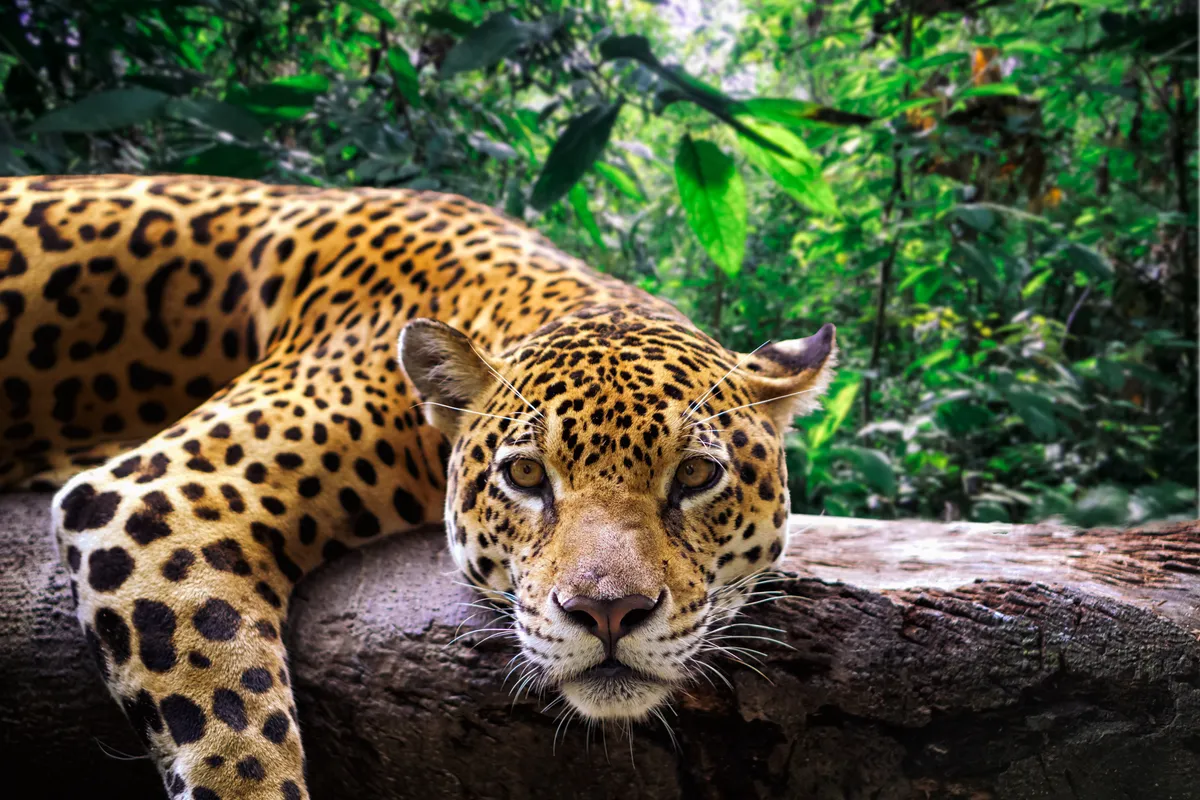
The jaguar is the largest cat in the Americas and the third-largest in the world (after the lion and tiger). Its head-body length can reach around 240cm, and its shoulder height up to 75cm.
How many subspecies of jaguar are there?
There is uncertainty as to whether the jaguar should be split into subspecies, and if so, how many.
Where do jaguars live?
Today, the jaguar is found in South and Central America, from Mexico to northern Argentina. The species’ range formerly spread over the US border into the southern states of America, but had become wiped out there by the 1940s due to hunting. There have been sporadic sightings in Arizona in recent years, however.
While jaguars do live in drier regions, they’re normally strongly associated with water, and they thrive in rainforests like the Amazon and in dense swamplands and wetlands that provide plenty of cover for stalking prey.
Leopard (Panthera pardus)
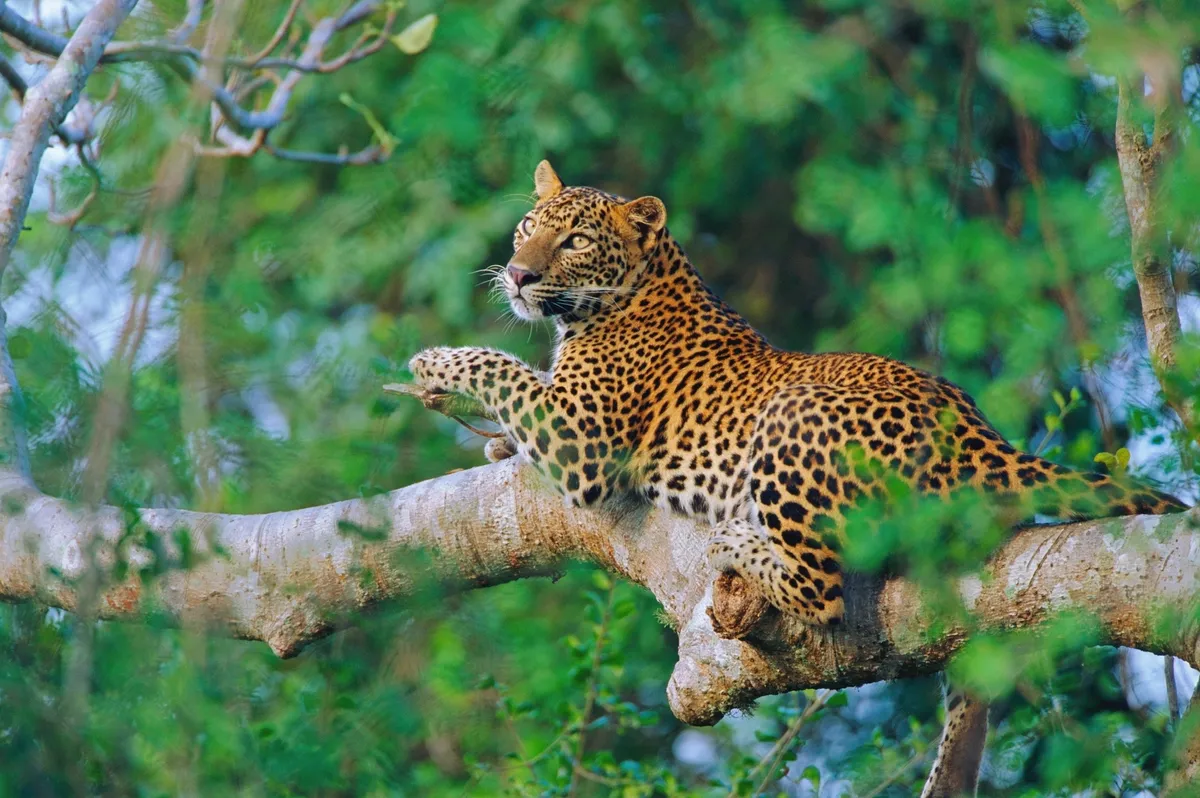
Marked with rosettes similar to the jaguar, leopards are a distinctive big cat species. They are threatened by habitat loss and fragmentation, illegal wildlife trade, and loss of prey.
How many species of leopard are there?
There is one species of leopard, which is split into nine recognised subspecies due to genetic analysis.
Where are leopards found?
Leopards are found in parts of Africa and Asia. It is believed that the species occurs in only 25% of its historic range, having become locally extinct in a number of countries including Singapore, Kuwait, Jordan, Tunisia, and Morocco.
Snow leopard (Panthera uncia)
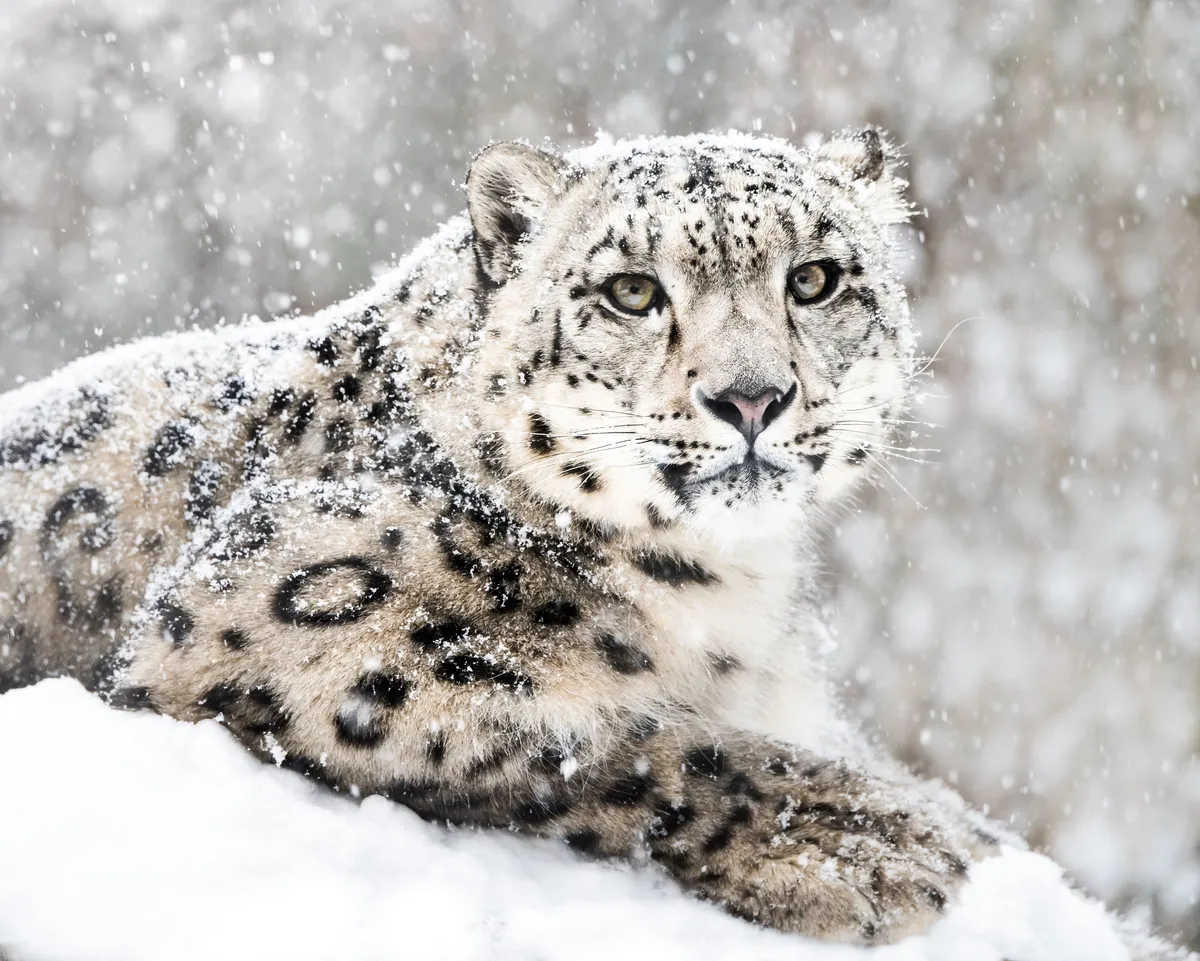
Snow leopards live in harsh, snowy, rugged alpine regions in central and south Asia. They can be found at elevations between 3,000 to 5,000 metres across a total of 12 different countries.
How many species of snow leopard are there?
There is one species of snow leopard, and according to the IUCN Red List, two subspecies have been named based on morphology but have not been confirmed by genetic analysis.
How big is a snow leopard?
Snow leopards are around 75-150cm from head to the base of the tail, with the tail adding on another 80-105cm, which makes them smaller than the other big cats. Snow leopards generally weigh between 25-55kg, although some large males have been recorded weighing up to 75kg.
Main image: Two young lion cubs. © Jochen Van de Perre/Getty


